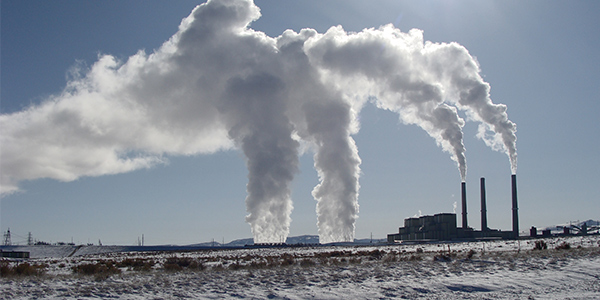By Tom Kleckner
Tri-State Generation and Transmission Association said Thursday that it will shut down 1,111 MW of coal-fired generation and an associated coal mine, bending to environmental pressures and market economics.
The Colorado-based cooperative announced the retirement of its last New Mexico coal plant by the end of this year and its remaining Colorado coal units and coal mine by 2030.
CEO Duane Highley said during a media conference call that carbon-reduction legislation in Colorado and New Mexico, the “economics of operating a [coal-fired] power plant in a competitive market,” and the addition of low-cost renewables led to a push from Tri-State’s membership to develop a future plan for the organization.
“The very, very low cost of renewables coming online are coming in well below the variable cost of fossil fuel plants,” Highley said. “We’re member-owned and -governed. Our members asked us to come up with a plan that is both financially and environmentally viable.”
Tri-State, with 43 member electric cooperatives and public power districts in four states, announced the development of its Responsible Energy Plan in July in an “aggressive” transition to a cleaner energy portfolio and to ensure compliance with state environmental regulations.
That was Step 1. The next step was Thursday’s announcement that it would retire New Mexico’s Escalante Generating Station at the end of this year and Colorado’s three-unit Craig Generating Station by 2030.
The 253-MW Escalante plant began operations in 1984. Tri-State previously retired its share of coal-fired Unit 3 of San Juan Generation Station in New Mexico in 2017.
The 1,285-MW Craig plant’s three units went into service between 1979 and 1984. Tri-State is the majority owner of the 410-MW Unit 2 and full owner of the 448-MW Unit 3. The cooperative said it is working with Unit 2’s other owners, which include Xcel Energy, PacifiCorp, Platte River Power Authority and Salt River Project, to determine the details of its retirement.
A previously announced 2025 closure date for the 427-MW Unit 1 will remain unchanged.
Tri-State will also close by 2030 its Colowyo Mine, which solely feeds Craig. The plant is also the only buyer of coal from Trapper Mine, which is owned by Tri-State and other utilities. Highley said it will be up to the plant’s other owners to decide its fate once Craig closes.
“I anticipate [Trapper] having difficulty remaining open when the [plant] is gone,” Highley said. “[The ownership] will have to decide what to do.”
The cooperative still has 783 MW of minority ownership stakes in the Laramie River and Springville coal-fired plants in Wyoming and Arizona, respectively. Asked whether Tri-State could simply withdraw from those contracts, Highley, who joined the cooperative less than a year ago, said he was not familiar with the details of any commitments.
Tri-State’s announcement drew a shout-out from Colorado Gov. Jared Polis during his State of the State address Thursday and praise from environmental organizations.
Polis, who has pushed legislation designed to make Colorado carbon-free by 2040, used Tri-State as an example of the private sector seeing a “profitable future in renewables.” (New Mexico last year passed legislation requiring 100% carbon-free electricity by 2045.)
“We’re also excited to work with Tri-State to allow its 17 member co-ops across the state to generate more renewable energy locally,” Polis said. “We want communities to have the option of reaping the benefits of more clean, low-cost local energy generation. … It is a bold step to protect the future of the planet we all must inhabit.”
The Rocky Mountain Institute’s Nick Steel noted that a 2018 RMI analysis of Tri-State’s coal fleet had determined the cooperative’s members would save $600 million through 2030 by retiring its coal-fired plants and investing in a replacement portfolio of clean energy resources.
The association’s “announcement represents a critical step toward achieving those savings for Tri-State’s members,” Steel said in a statement. “Importantly, due to falling prices for renewable resources in the Western United States since 2018, the cost savings that Tri-State can capture as a result of these announced coal plant retirements will likely be even higher than we estimated in 2018.”
Western Resource Advocates’ Erin Overturf, deputy director of the nonprofit environmental group’s Clean Energy Program, agreed.
“Closing these coal-fired power plants is an important step that will help Tri-State reduce its emissions of carbon dioxide and other harmful air pollutants, while also lowering electricity costs for its members,” she said. “Continued operation of coal plants is increasingly more expensive than shifting to cleaner resources like wind and solar.”
Both Polis and Highley referenced their working together on “proactive legislation” and ensuring employees affected by the closures are taken care of.
“That’s the key for us: maintaining stable rates and reliable power for our members,” Highley said. “To provide certainty for our members and employees and communities, wholesale electric rates have to be stable. We’re confident we can manage these closures while maintaining stable rates.”
Highley put off discussing the Responsible Energy Plan and replacement power until next week, preferring, he said, to stay focused on Tri-State employees and its communities over the next few days. He said the coal closures will mark a “significant downsizing of the company and a significant loss of jobs,” touching almost half the employees.
Tri-State has 600 employees directly involved in coal production and another 100 “probably” impacted, Highley said.
Highley did say the Responsible plan will result in a “significant” investment in renewables and rural electrification initiatives.
Tri-State has issued six requests for proposals for renewable energy resources, resulting in power contracts for 656 MW of utility-scale wind and solar resources. The cooperative says nearly a third of the electricity used by its consumers comes from renewable resources.



